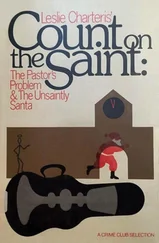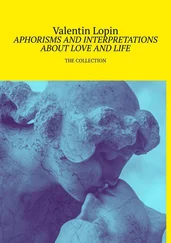
Regardless of her epileptic seizures, in these writing states, on their twin pillars of prayer and foundation, the Carmelite nun exhibits a remarkable capacity for observation, bolstered by an unprecedented rhetorical elaboration of what it is to lose and to reconstitute oneself through amorous transference onto the other. These writings cannot be reduced to the discharge of a duty; they refashion in depth the complexity of a whole person, along with her relationships. First in the verbalization of Confession, then in the still more intimate act of writing, the ground covered mentally and physically, emotionally and culturally, biographically and historically takes over the subjective state of distress, be it neuronal or existential, and moves aside from it — when not independent of it — to transform it at last into a being-in-the-world that re-founds both self and others. From that point on, prayer-writing-politics are lived and restored as the three indissociable panels of a single process of ceaseless re-foundation of the self, of the subject , continually open to its own otherness, thanks to the call of the Being-Other (“Seek yourself in Me”). They trigger the spiraling re-creation of the woman who prays, and writes, and is metamorphosed: “When the soul [in the form of a silkworm] is, in this prayer, truly dead to the world, a little white butterfly comes forth.” 9

Teresa begins her “search” with a “suspension of the faculties”—in scholastic terms, the intellect, the will, and the imagination — in order to regress to that state in which the thinking individual loses the contours of his or her identity and, beneath the threshold of consciousness and indeed of the unconscious, becomes what Winnicott calls a “psyche-soma.” 10In that state, which for psychoanalysis is a reversion to the archaic osmosis between mother and infant (or fetus), the tenuous link to the self and the other is maintained solely by that infralinguistic sensibility whose acuteness is the greater in proportion to the relinquishment of the faculty for abstract judgment. A different thought results, an a-thought, a dive into the deeps that terms like sensorial representation or psyche-soma convey better than any notion of mind. It is as if the reasoning mind had passed the baton of being-in-the-world to a fantastic fabrication domiciled in the entire body, touching-feeling outside and inside, its own physiological processes and the external world, without the protection of intellectual work or the help of a judging consciousness. Winnicott wondered why we locate the mind in the brain, when the regressive states entered by some of his patients testified, he thought, to how all the senses and organs play a part in self-perception and perception of the outside world: his observation suggested that the psyche is the body, or soma, and the body is the psyche.
UNIVERSAL SEPARATION
After the work of repentance, quiet , and union , Teresa describes the fourth degree of prayer, which is rapture : this shows how the destitution of the self in the psyche-soma begins with the sense of “being distant from all things.” 11In an acute state of melancholic loneliness, the soul desires “only to die,” feeling bereft of consolation and not finding “a creature on earth that might accompany it.” And yet this low mood does not lead it to complain:
Now, I understand clearly that all this help [from others] is like little sticks of dry rosemary and that in being attached to it there is no security; for when some weight of contradiction or criticism comes along, these little sticks break. So I have experience that the true remedy against a fall is to be attached to the cross and trust in Him who placed Himself upon it. 12
For there is not a “creature on earth” who is consistent, lovable or kind; people invariably let one down; and this primary frustration has me cloistered in a convent as if to embody, confirm and perpetuate my isolation. My longing for love is not however quelled by this universal separation, this “distance from all things”: in a last-ditch erotic impulse, I invest it in an imaginary Object who is the absolute Subject, the God-man who bestowed divinity upon human suffering (and vice versa) to the point of fusion with it, a merging of the two. Is Christ the last of the gods? Did He betray divinity? Or perhaps, by revolutionizing the one God of the Bible, He incarnates an ultimate anthropological truth: it is imperative to divinize the universal separation and turn it into a Great Other, this being the only way to mend the distance and mend ourselves in the union with Him, our fellow, the Crucified One who rose again. If you wish to be “saved” from universal separation, if you believe in the possibility of rapture, go in for regressions as delightful as they are excruciating, because the price of salvation is to cross that distance (a process later known as masochism — albeit the friars of Duruelo, supporters of Teresa’s reforms, could have shown a thing or two to that scandalous Sacher-Masoch).
Teresa’s trajectory is a descent into the doloristic depths of the religion of salvation to uncover its intrapsychical operations. But she also transcends these, as no one had done before, by opening body and soul to the joys of the love of the Other and reasserting His presence on earth with the creation of an innovative religious institution: “I have become so adept at bargaining and managing business affairs.” 13Is she adumbrating an exit from voluntary servitude? Or locking it into a new and exalted impasse?

For the early Christians, as for Teresa de Cepeda y Ahumada in the sixteenth century, Jesus and His powers were in no sense the “fantasy” the coming humanism would label them as (shortly echoed by psychoanalysts, including myself). Christ was convincing. He imposed himself as an absolute truth because He managed to project everybody’s pain into His own “masochism,” to inscribe our grief into His Passion, if only we believe that this loving sacrifice on the Cross will also open the Heaven of resurrection to us. Thus Jesus Christ became a subtle antidepressant for abandoned, unhappy humanity.
The black sun of melancholia that weighs on “separated” humanity then split into its parts. On one side, the sun: the God-man, the Light, the Word, Who loves and saves us; the exultant denial of separation, sorrow, violence, death. On the other, the black shadow that overhangs believers in the grip of solitude: the body of the tortured Christ, in which men and women can immerse their own. Either side, heads or tails, when through prayer the osmosis with the crucified-resurrected Christ is realized, it can only be paroxystic — annihilation and rebirth — and, on that condition, gratifying. The consolation that results does not suspend sorrow, let alone get through it. It is content to maintain or stoke it up, the better to reward it.
Is this a reparation, or a stimulation of the “pleasure unto death” diagnosed by Nietzsche well before the Freudians got hold of it? 14Teresa is sharply aware of the issue, enticingly so for future analysts. In this properly vicious circle, the melancholic pain of separation from one’s loved ones becomes vastly more poignant when the Beloved is God Himself, as she points out:
It seems to me that God is then exceedingly far away.…This communication is given not to console but to show the reason the soul has for becoming weary in the absence of a blessing that in itself contains all blessings.
Читать дальше













